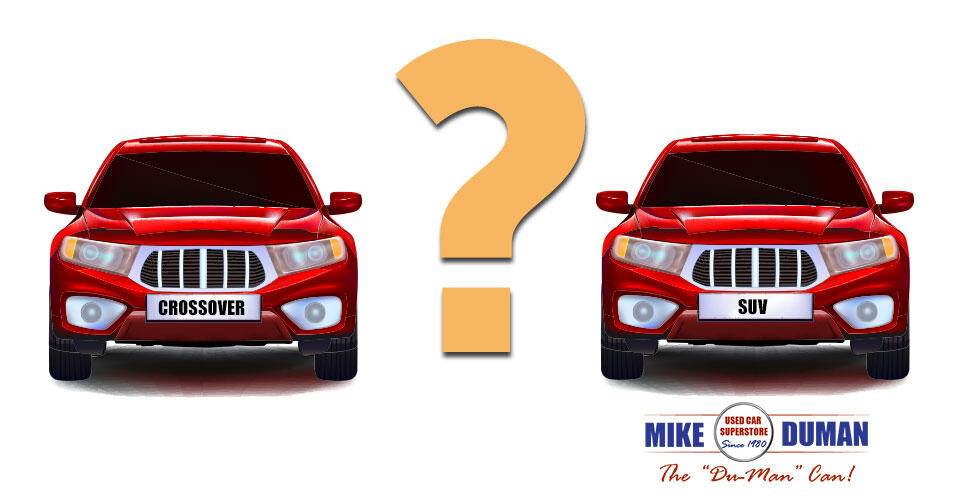
Marketing is great about inventing new names for every genre and subgenre and niche. If you take a walk through your local dealership’s lot, you’ll see that vehicles are no different. So you want something between a sedan and a van, and you don’t want to drive a soccer-mom mobile. You’re looking at vehicles that are classified as “crossovers” like the Jeep Compass and Honda HR-V, and “SUV” vehicles like the GMC Terrain and the Hyundai Santa Fe, but you have no idea what the difference is. Don’t worry, some of the marketing agents don’t seem to know either!
A Difference in the Ride
The biggest difference between a crossover and an SUV is the ride. Crossover vehicles are most often built on a car body and use the unibody structure. Designing a vehicle this way gives you a great “car” type feel and handling. Driving a crossover will not feel much different than driving a sedan. The ride is built for the highway, giving your passengers a smooth ride. An SUV is constructed with a body on frame, much the same as a truck. SUVs are heavier and more rugged than crossovers. The truck-like body on frame design is built to withstand those long dirt roads and the occasional jaunt off the beaten path.
A Difference in Use
The crossover design is based on a passenger car. As such, crossovers are well suited to loading the kids and gear inside and heading to the beach, the mall, or across country. The SUV truck design still has the potential to carry all that gear, but the truck body gives it something extra. An SUV can tow that toy trailer around, making it easier to bring the kayaks, haul lawn equipment, or bring the four-wheelers out to the woods. This doesn’t mean that crossovers are unable to be used for towing, just that a full SUV is more suited to the task. An SUV is far more likely to have a 4-wheel drive system as part of the package than its crossover sibling, but crossovers are now coming standard equipped with all-wheel drive systems that help you travel more safely on slick and snowy roads.
A Difference in Cost
The total cost on a crossover tends to be lower than its SUV counterpart. Crossovers often have many of the same safety features as a passenger car such as crumple zones, where the SUV body is built to withstand a crash without those added features. For insurance purposes, they are both lumped in the same category, which levels the playing field a little. Then there is the day to day cost and upkeep. The SUV is built body on frame, and is a heavier overall vehicle, and as such will chew up your gas bill a little faster. Crossovers are more often designed with fuel efficiency in mind. Newer SUV designs are beginning to incorporate aluminum bodies which lighten the load and improves gas mileage. Typically a crossover will cost less to purchase and maintain.
If you’re in the market to pick up a new (or new to you) vehicle, and you are looking to get into something bigger, a crossover or SUV is certainly the way to go. Think about your average use, and consider what is most important to you. Here are a few guidelines to help you decide which one is right for you.
Choose a crossover if you:
- Take the family to events
- Spend a lot of time commuting/carpooling
- Drive mostly on maintained roads and highways
Choose an SUV if you:
- Like to go off-road
- Live in an area that has a lot of dirt or unmaintained roadways
- Tow your boat/heavy equipment/motorcycle trailer
